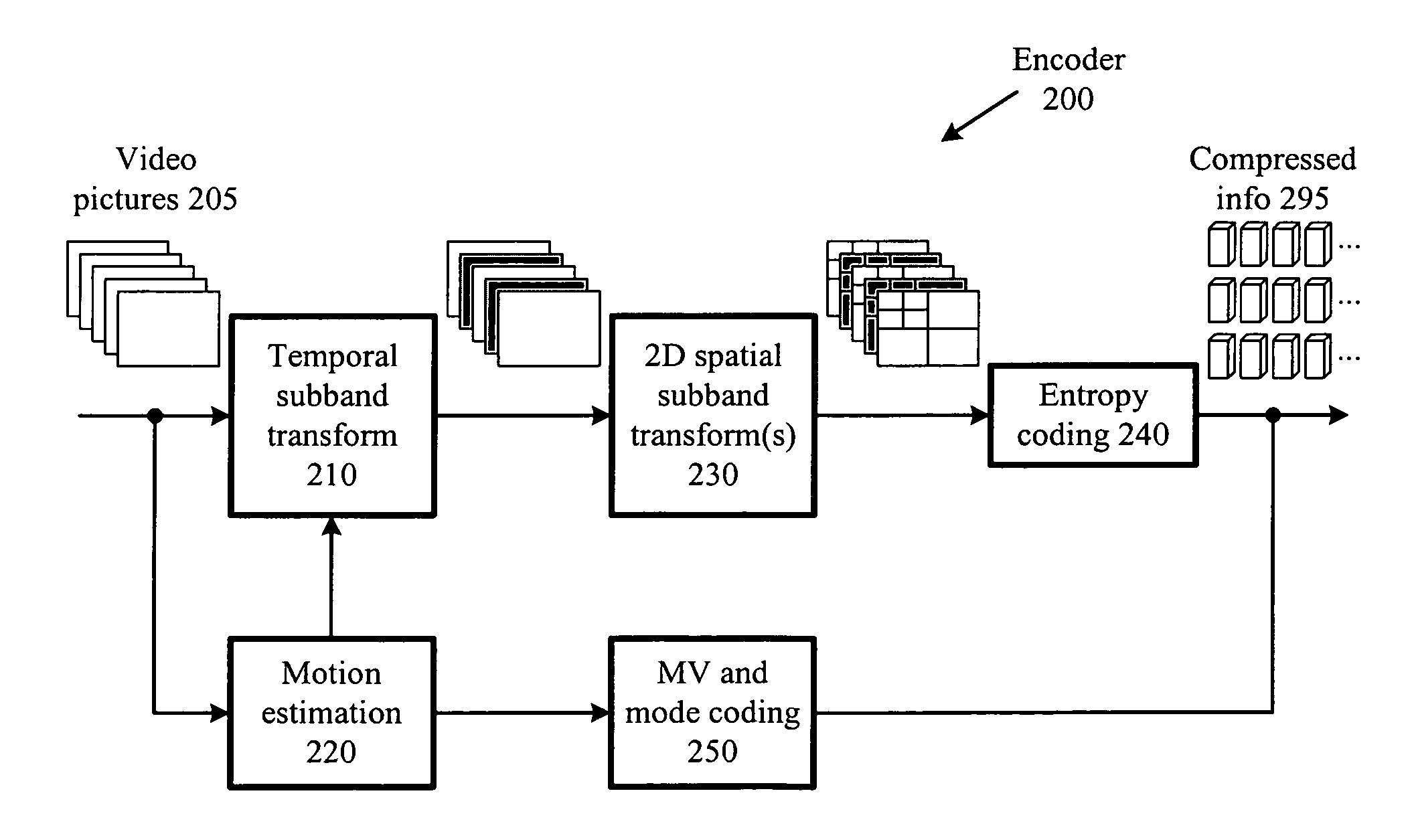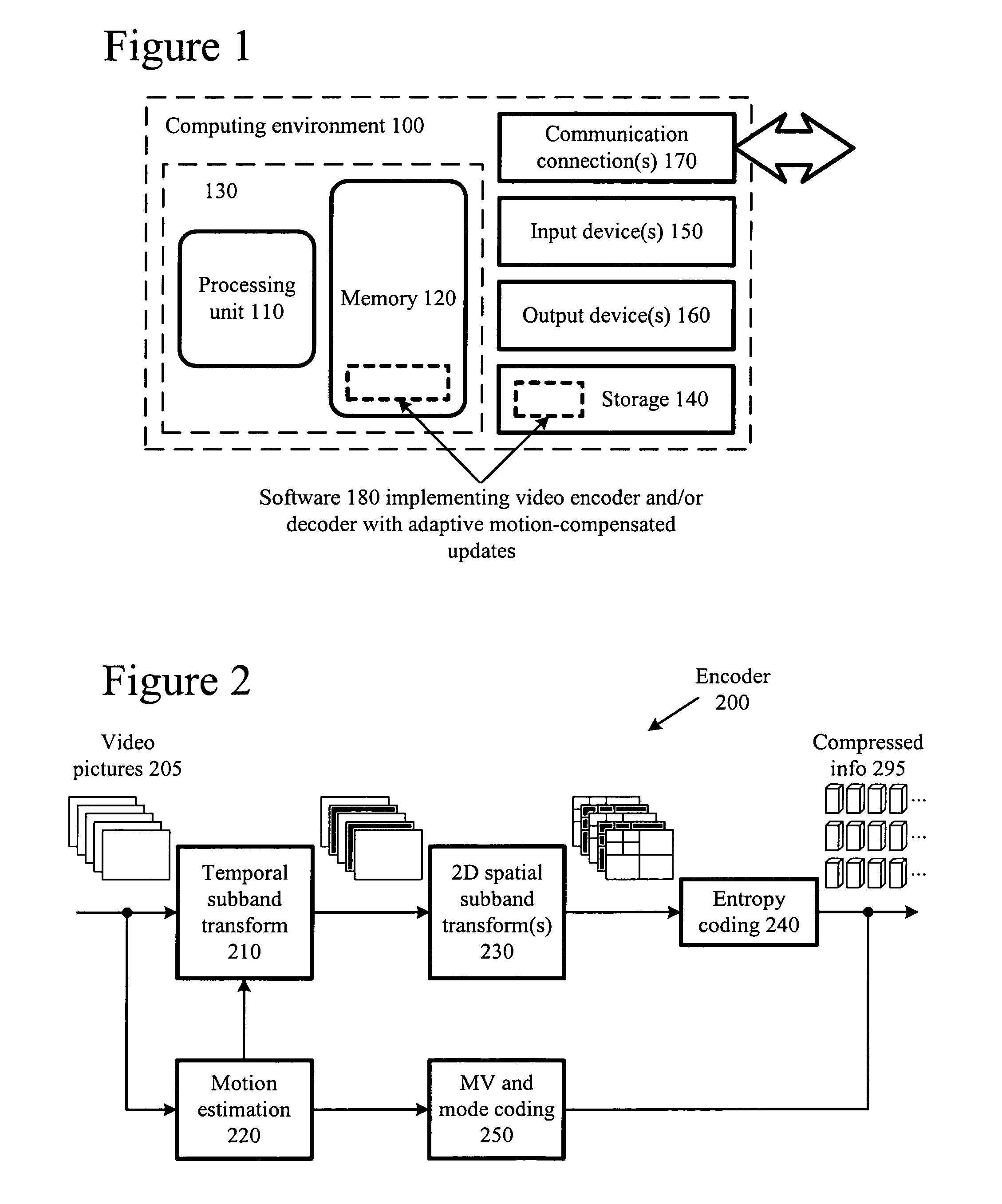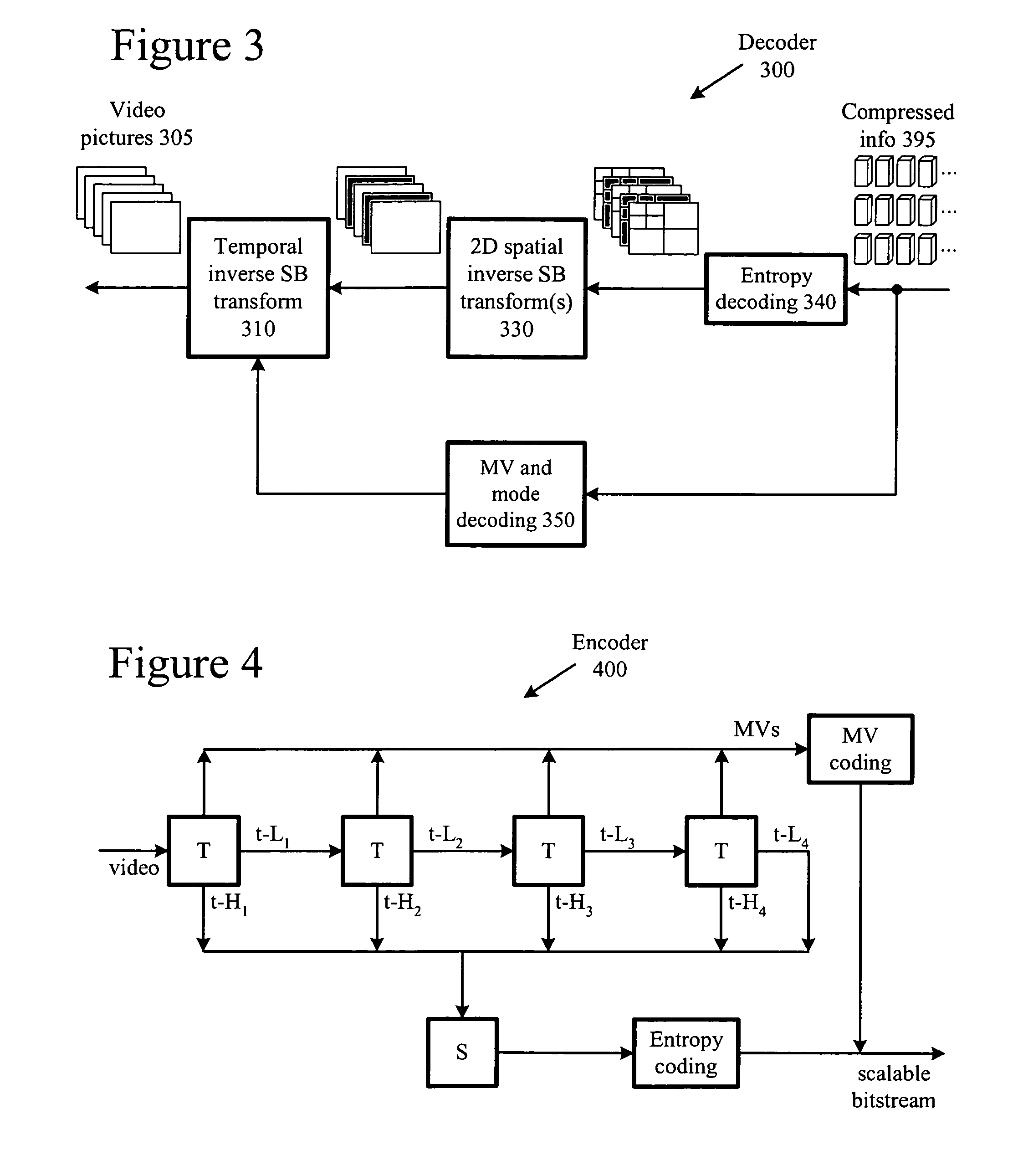Adaptive updates in motion-compensated temporal filtering
- Summary
- Abstract
- Description
- Claims
- Application Information
AI Technical Summary
Benefits of technology
Problems solved by technology
Method used
Image
Examples
Embodiment Construction
[0041]In three-dimensional (“3D”) wavelet or sub-band video coding, video is decomposed into many temporal-spatial sub-bands through a number of temporal transforms and spatial transforms. The sub-bands are somewhat independent, in that some of them can be dropped for scalability. For example, to decode low spatial resolution video, the spatial high-pass sub-bands are dropped and a decoder carries out decoding only with the received data in spatial low-pass sub-bands.
[0042]The various techniques and tools described herein may be used independently. Some of the techniques and tools may be used in combination (e.g., in different phases of a combined encoding and / or decoding process).
I. Example Operating Environments
[0043]FIG. 1 illustrates a generalized example of a suitable computing environment (100) in which several of the described embodiments may be implemented. The computing environment (100) is not intended to suggest any limitation as to scope of use or functionality, as the d...
PUM
 Login to View More
Login to View More Abstract
Description
Claims
Application Information
 Login to View More
Login to View More - R&D
- Intellectual Property
- Life Sciences
- Materials
- Tech Scout
- Unparalleled Data Quality
- Higher Quality Content
- 60% Fewer Hallucinations
Browse by: Latest US Patents, China's latest patents, Technical Efficacy Thesaurus, Application Domain, Technology Topic, Popular Technical Reports.
© 2025 PatSnap. All rights reserved.Legal|Privacy policy|Modern Slavery Act Transparency Statement|Sitemap|About US| Contact US: help@patsnap.com



